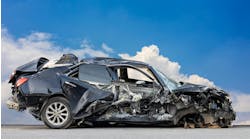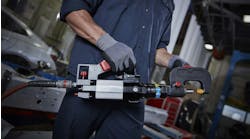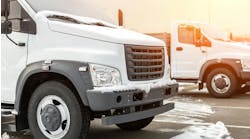Whether we’re talking about fenders or fences, bumpers or basketballs, there is a constant to every industry—change. The best and brightest in any given industry are the ones who stay ahead of the curve, even when they as an individual may be falling behind. Attorney William Ferreira relayed one such story from his law school days.
“I'll never forget, my mentor, when I was in law school, I would come in, and he would hand me these research projects or whatever else,” says Ferreira, whose firm Automotive Defense Specialists is tailored toward the automotive repair industry. “And he'd say, ‘Listen, when I went to law school, we didn't have the computers, we didn't have the internet, we didn't have all these resources available to us. And yes, I know how to use some of them. But the newest graduates are on the cutting edge of technology. And they know how to access things that I don't know how to access or get to as quickly and as efficiently as you new kids.’”
The analogy here to collision repair is that there is more for owners to stay up to date on than ever. From OEM procedures to how to handle EVs, shops are dealing with a lot. Staying current isn’t only important for completing quality repairs, it’s absolutely vital for keeping your shop from being exposed to liability. There’s more of that than ever, too.
“There's nobody banging on your door to say, ‘Hey, man, you gotta get educated on this,’ you've got to be proactive with it, do it on your own and take initiative,” says Justin Fisher, who operates multiple CARSTAR shops in the Chicagoland area. “... If you're not aware that you are liable for that, then that's already an issue or problem, right? So step one would be being aware, self awareness, knowing that you are liable for it. And then, all right, how do we implement a process or procedure to make sure we're doing this correctly? And are you going far enough?”
Many liability issues for shops are obvious. If a repair isn’t completed properly and that vehicle gets in another accident, that shop has opened itself up to liability. Then there are other things that are not so obvious. As shops take on more and more jobs, some are more inclined to sublet work, such as calibrations as is the case in Fisher’s shops.
But even if a shop employee isn’t the one completing the work, the shop can still be held liable if something goes wrong. And with calibrations, the stakes are high. Fisher cited an example of a bumper loaded with blind spot sensors, which if it was just a few degrees off could equate to 15 feet out of alignment out on the road.
“That's one particular area that I tell my body shops, I know you got to sublet work, I know you can't do everything,” says Ferreira. “Nobody's master of all trades. But when you do sublet the work, you want to build a relationship with the shop and you want to ensure that they're insured, you know that they have some type of policy should something happen, or one of their mechanics is negligent in some way and it comes down to it, that there's a policy that's going to cover the damages because you don't want to be put out of business or be bankrupt by a sublet auto repair shop that did shoddy work.”
There are other factors, of course, that present roadblocks for shops doing their best to complete safe and quality repairs. Shops need access to the latest OE procedures and how to find them, as Ferreira noted. Shops also have to negotiate the repair process with insurers, something that can cause delays and put pressure on all parties.
And if a shop feels pressured to complete repairs on anything but its own timeline, that opens the door for mistakes to be made. The antidote to this, in Ferreira’s opinion, is a combination of thoroughness, patience and resolve. Shops simply have to take the time to research repairs thoroughly. They have to have the patience to say to insurers that either they will do the repair correctly or they won’t do it at all. And they have to have the resolve to stick to that message.
“The insurance company is going to come in and give you a terrible first estimate, you're going to say, ‘OK, I see what they're saying, I'm going to go do my own research and see what I need to do to repair this vehicle,’” Ferreira says. “And you're going to take pictures, you're going to print out copies of the manufacturer specific repairs, where it says you need to repair this, like this, and you're going to put it all together in an estimate, and you're going to send it to the adjuster and the insurance company.”
Ferreira acknowledges pushback is possible, if not likely. But he advises shops to do all they can to avoid anything that opens them up to liability. And that’s especially true when there are more and more exposures.
There are the aforementioned calibrations and the infrastructure requirements that come with it. There are the strict temperature requirements for storing EVs. There are the special procedures for safely handling their high voltage systems. There are the environmental requirements for working with aluminum, and so on.
“It sounds super fun. It's going to be great,” says Fisher, laughing. “So when it was just mechanical vehicles, just a gas operated vehicle, those have been around for so long, everybody can be an expert on repairing those. The EV vehicles are so new, everybody's going to have something different out on that, I think in terms of the OEs. So I'm curious to see how that evolution takes place.”
That raises the stakes for the insurers as they’re forced into more complicated and more expensive repairs. And just like shops have to do their due diligence to stay current, so do adjusters. Adjusters may not yet have the education they need to make an informed estimate, and that’s again where the shop comes in.
“That is certainly on the shop,” says Ferreira, “or at least the shop foreman, or the lead estimate writer or the teardown specialist, to make sure they keep up on their training, make sure they go to as many classes as possible, and making sure they go to I-CAR, updates, and certifications, and they learn these new systems, and they learn what repairs are going to be necessary to return the vehicle to pre accident condition, because that's what the policy allows for.”





